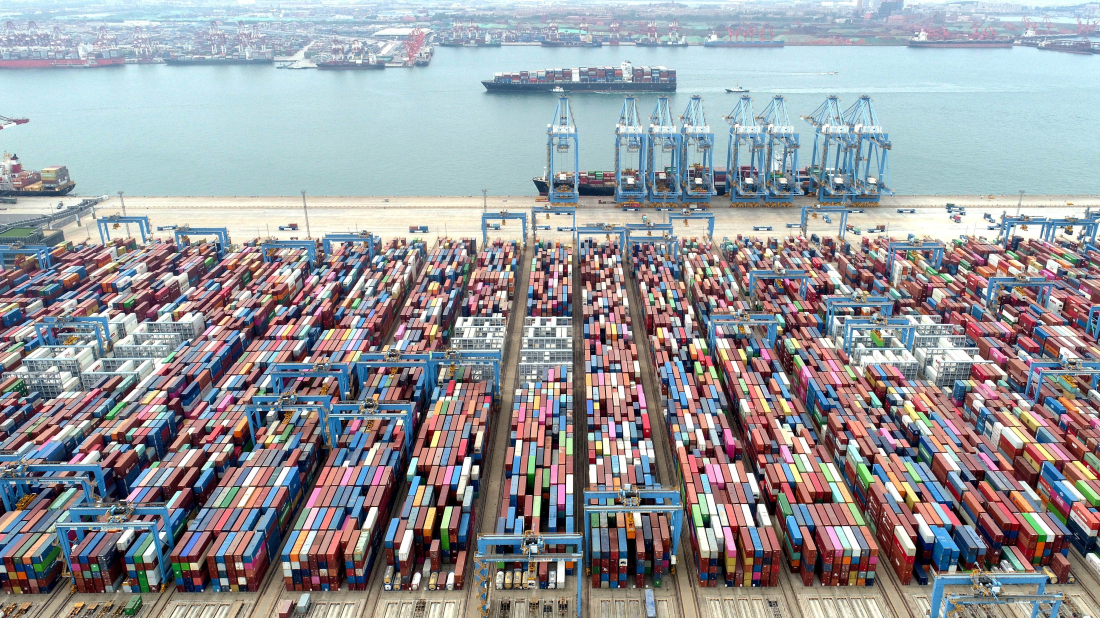Tehran sees massive protests as unrest spreads nationwide
Tens of thousands of Iranians have taken to the streets in Tehran and across at least 28 cities in a wave of anti-government demonstrations, now enter...

China’s exports are expected to have grown 5% in June as manufacturers hurried goods abroad ahead of a 12 August deadline that could see the U.S. restore punitive tariffs, a Reuters survey of economists indicates.
Outbound shipments are forecast to have risen more than May’s 4.8% gain, the median estimate of 23 analysts showed in the report. Imports are tipped to rebound by 1.3% after a 3.4% slide, signalling modest recovery in domestic demand following stimulus unveiled late last year, according to the poll.
Trade officials are due to release the figures in Beijing on Monday at about 03:00 GMT. Economists predict a goods surplus of $109 billion, up from $103.22 billion in May, underlining China’s continued reliance on overseas sales even as diplomatic headwinds mount.
According to the report, June’s acceleration is widely attributed to exporters “front-loading” orders in case a 90-day tariff ceasefire agreed with Washington in May collapses. U.S. President Donald Trump has warned he could re-impose duties of up to 40% on Chinese goods and levy a 10% charge on imports from BRICS states “pretty soon,” raising the risk of broader trade disruption.
Frictions resurfaced last month when the White House accused Beijing of delaying a pledge to ease curbs on rare-earth shipments—materials vital to defence and electronics industries. Talks in London later revived the truce, but analysts at Nomura caution that export growth “will likely slow sharply in the second half” as elevated tariffs, tighter U.S. scrutiny of trans-shipments via Vietnam and strained ties with the European Union bite.
Brussels, preparing for a summit this month, says Chinese over-capacity is flooding global markets and limiting European firms’ access to the mainland. Beijing’s move to exempt major cognac producers from threatened duties has done little to ease concern, especially over Chinese electric-vehicle sales in Europe.
With external demand wobbling, Beijing has leaned on tax breaks and credit support to shore up consumption. Yet economists say shipments remain a pillar of activity. Vietnam—now China’s second-largest export market—saw a surge in Chinese parts and finished goods last year as firms sought to reroute trade.
Should negotiations fail, analysts expect producers to face higher costs and weaker orders just as policymakers struggle to keep overall growth near the government’s 2025 target of “around 5%”.
Open-source intelligence (OSINT) sources reported a significant movement of U.S. military aircraft towards the Middle East in recent hours. Dozens of U.S. Air Force aerial refuelling tankers and heavy transport aircraft were observed heading eastwards, presumably to staging points in the region.
Snow and ice stalled travellers in northwest Europe on Wednesday, forcing around a thousand to spend the night in Amsterdam's Schiphol airport but delighting others who set out to explore a snow-blanketed Paris on sledges and skis.
Diplomatic tensions between Tokyo and Beijing escalated as Japan slams China's export ban on dual-use goods. Markets have wobbled as fears grow over a potential rare earth embargo affecting global supply chains.
Two people have been killed after a private helicopter crashed at a recreation centre in Russia’s Perm region, Russian authorities and local media have said.
U.S. President Donald Trump has warned that Iran could face a strong response from the United States if its authorities kill protesters amid ongoing unrest.
Türkiye’s UN envoy called on the international community on Thursday to maintain strong support for the elimination of Syria’s remaining chemical weapons, stressing that the task is both a legal obligation and a critical priority for regional security and humanitarian protection.
Georgia has said it will clarify the circumstances surrounding the U.S. seizure of a Russian‑flagged oil tanker in the North Atlantic and is seeking information on its Georgian crew members.
In a bold move to prioritise American interests, President Donald J. Trump has signed a Presidential Memorandum directing the withdrawal of the United States from 66 international organisations, including both non-United Nations entities and several UN-related bodies.
The U.S. Department of Homeland Security has said it may deploy additional federal agents to Minnesota following the fatal shooting of a woman by an Immigration and Customs Enforcement (ICE) officer.
UN Secretary-General Antonio Guterres expressed regret on Thursday over the decision by the Trump administration to withdraw from 31 entities linked to the United Nations.
You can download the AnewZ application from Play Store and the App Store.

What is your opinion on this topic?
Leave the first comment